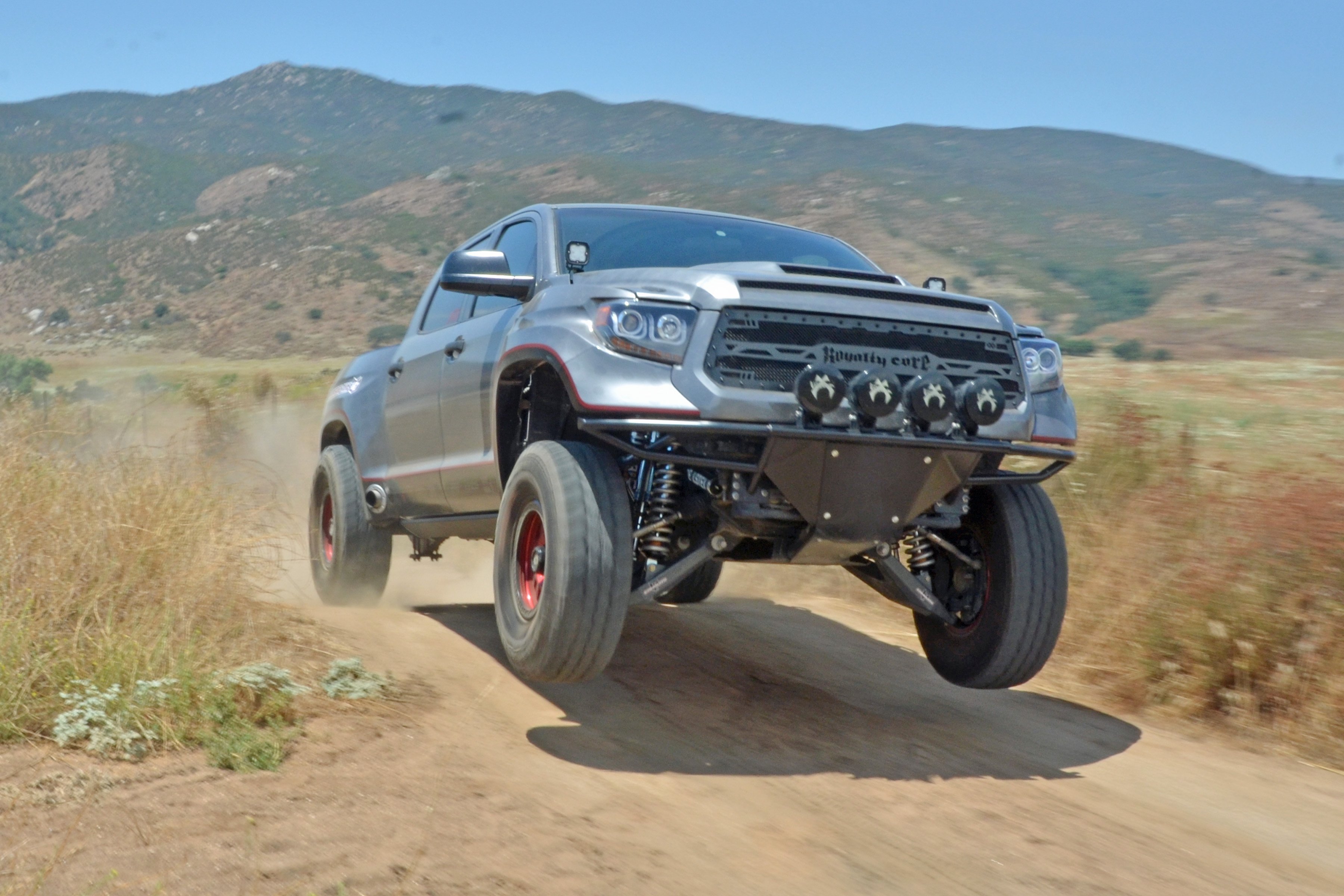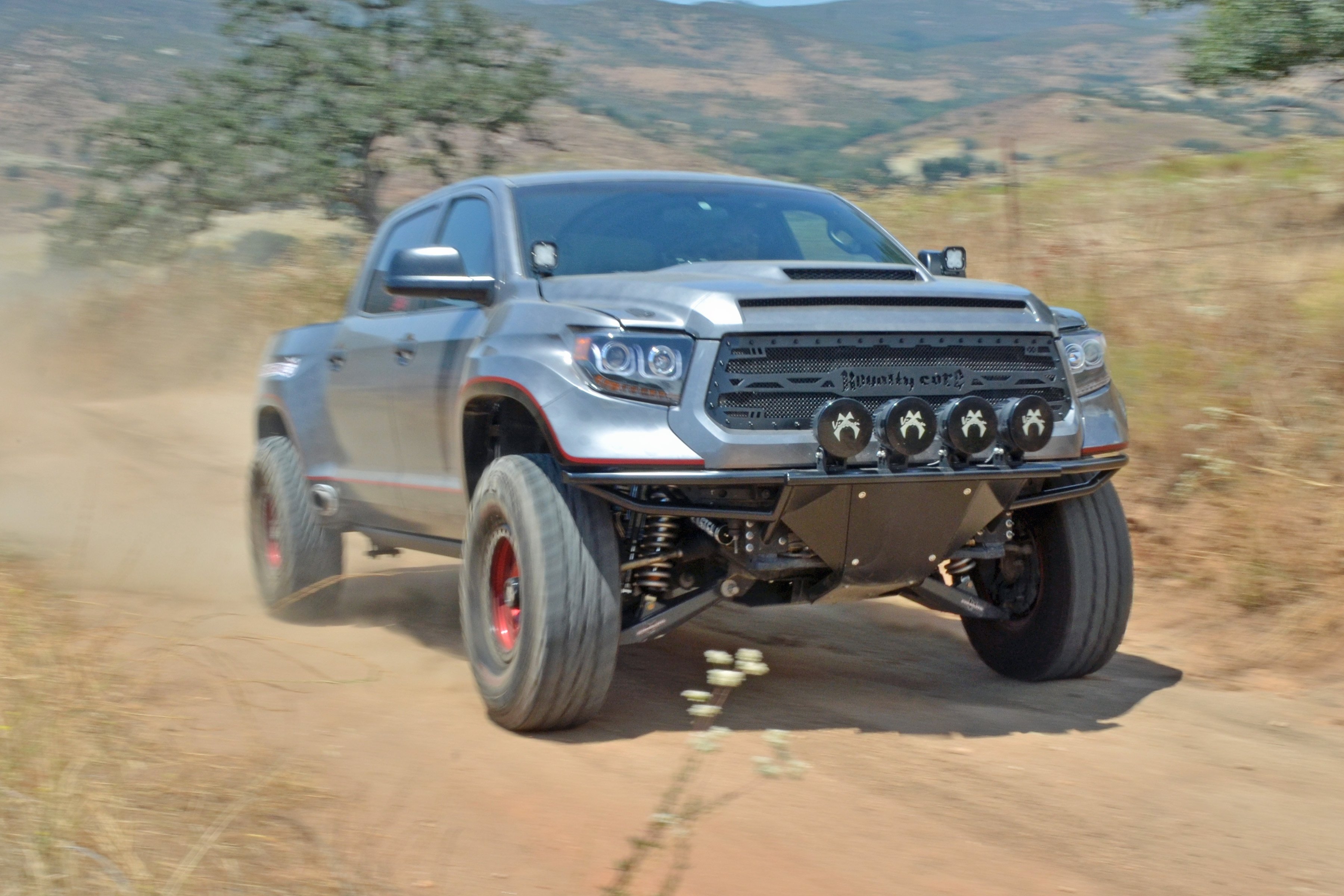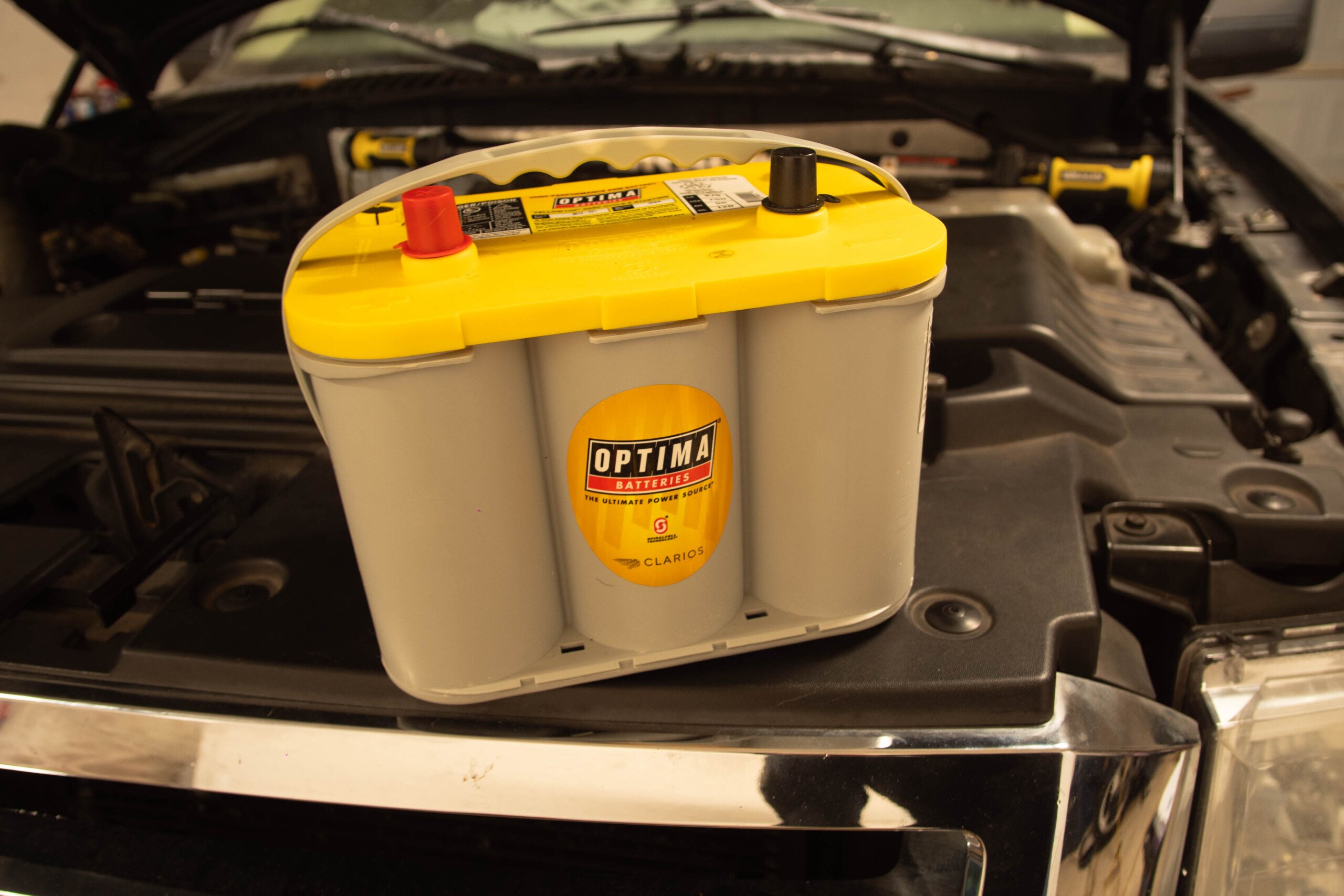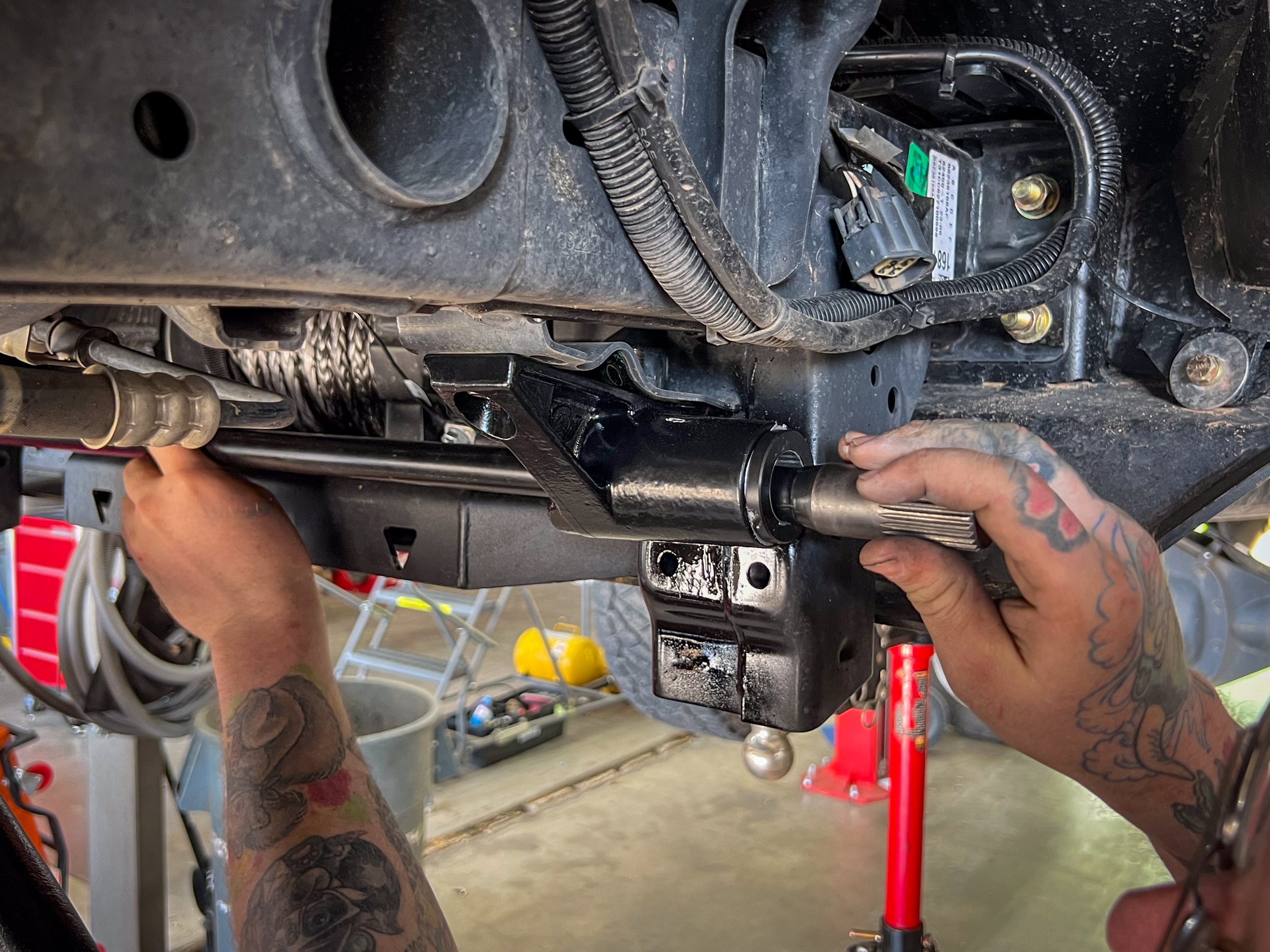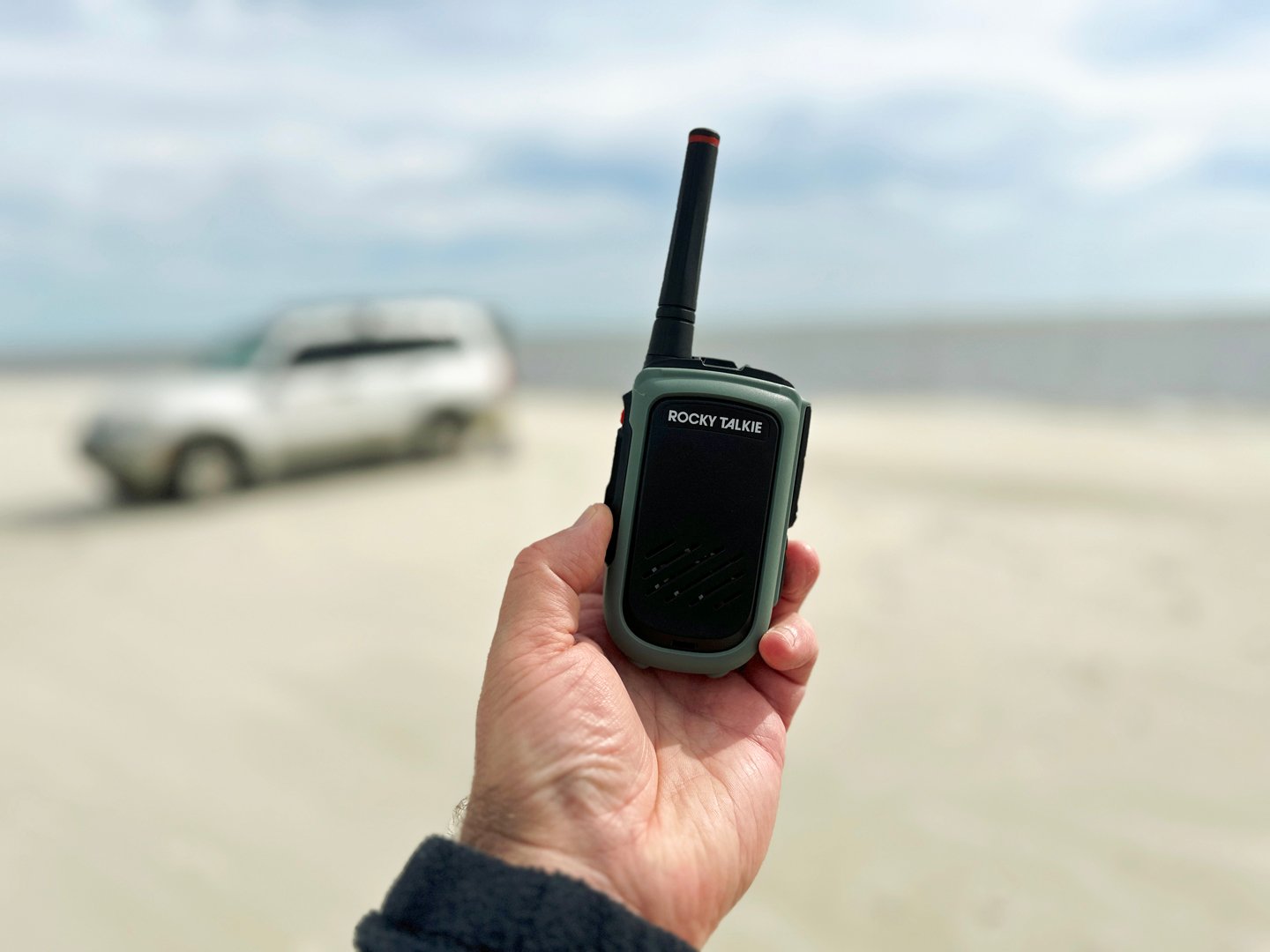As an off-roader, one of the first thing that comes to mind when you’re hopping in your new rig is suspension upgrades. When it comes to a truck suspension, it’s more than what justifies what size tires can be used and how big of lift the suspension creates.
A lot of it is the functionality of the product and how well the shock absorbers will work in the outdoors under extreme condition. The function of the actual product is extremely important for those who take their offroading serious. Although this isn’t a new build, we’re still looking for an upgrade. So, we turned to the experts of off-road.
Sitting Softer
We met with our friend, Tim Grachen, the owner of a 2011 Toyota Tundra, as it is time for a suspension upgrades for this truck. The truck currently sat on Camburg‘s long travel kit, but looking for an upgrade Grachen knew where to turn. Helping us with selecting the proper shocks, we turned to the experts at Bilstein for the answers.

“This truck has a very customized suspension kit,” said Casad. “The front is a Camburg kit, that is partially bolt-on and partially weld-on and the rear suspension is a custom fabricated bed cage.”
Shane Casad, Light Truck and Off-Road project manager for Bilstein, was along for the ride during this upgrade. Casad was very excited to upgrade this truck with their late model parts. After hearing that their products wouldn’t work it was time to put it to the test and get them under the truck.
The Parts

Bilstein tested and tuned the shocks for the ride. With the rebound and compression shims laid out, changes could be made to help increase the ride quality.
For the front of the Tundra, Casad chose what was best for our application which was a coilover, bypass and bump stop per each front corner. The rear would get a bypass and bump stop.
For the front Bilstein went with an eight-inch travel B8 8125 60mm coilover (PN 33-225494), an eight-inch travel M9200 60mm bypass (PN 33-269528 (left), PN 33-269535 (right)), and a two-inch travel M9100 46mm bump stop (B4-BE5-G722-MO).

Shown are the adjustment tubes where you can increase or decrease the compression. This gives drivers the opportunity to adjust their suspension to the terrain they are involved in at any time.
For the rear Bilstein went with a 16-inch travel M9200 70mm bypass (PN 33-250809 (left), PN 33-250816 (right)) and a two-inch travel M9100 46mm bump stop (B4-BE5-G722-MO).
A weekend mechanic can handle most of the installation with basic hand tools. Removing the tire and drooping out the suspension makes it easy to unbolt or bolt in the new shocks.
Out of curiosity, we asked Casad about these upgraded parts and if they were suitable for daily driven vehicles. “These shocks are specifically designed for off-road motorsports,” Casad said. “But, there is no reason why you can’t drive these every day. However, you would want to consider maintenance requirements before purchasing off-road racing components for a street vehicle.”

We would say utilizing an externally adjustable bypass shock is the easiest, most effective way, to tune your suspension for the best off-road performance.
“These shocks were ‘off-the-shelf’ motorsports shocks that we carry in stock,” Casad continued. “The only change we made was the reservoir hose in the front B8 8125 60mm coilover. We changed the hose length and the hose fitting in order to accommodate Tim’s, already existing, remote reservoir mount that was welded to the frame. Other than that, the install was very straightforward.”
Removing the tire and lifting the truck took the majority of the install time. Having the truck set up for a similar shock set up did help, but even if this was a first time install the duration would not have changed.
Test And Tuning
Bilstein may have used off-the-shelf shocks, but did take a look at the valving inside. “We did do a ride and handling test which consisted of a combination of street and off-road,” Casad explained. “We ended up revalving the front bypass during this process to add more bottoming control.”
During this process, they made multiple rebound and compression adjustments to dial in a comfortable ride. This was as easy as pulling over, crawling under the front suspension, and adjusting the rebound and compression valves.
What would testing be without a little bit of airtime?
The damping goal with this type suspension is to have well-isolated experience in the cab, without high-frequency harshness, and at the same time, have the ability to smoothly control a large impact event.
“The highlight of this install here is the front long travel Camburg kit,” Casad said. “It easily affords to the average guy real off-road performance by allowing for an easy installation of high-performance motorsports dampers on a Tundra.”
Basically, the Camburg kit makes this level of performance more accessible without needing extensive custom fabrication. With the addition of the Bilstein shocks this truck is ready for the desert.
At the end of the day, Grachen was pleased with the outcome of the project and he looks forward to testing the setup every chance he gets. For us, being able to see the process and feel the difference in the ride before, after and during tuning is something that is hard to explain, but the changes made were worth it.
For more information on Bilstein’s products, be sure to visit their website.




